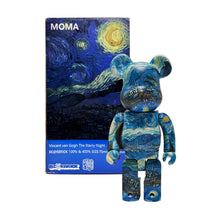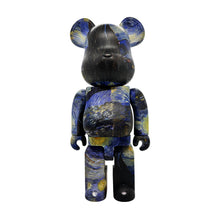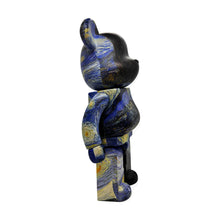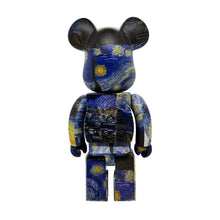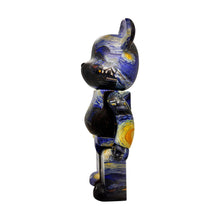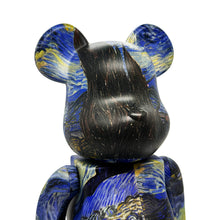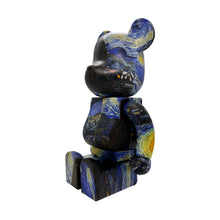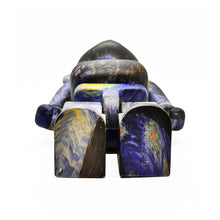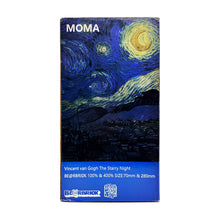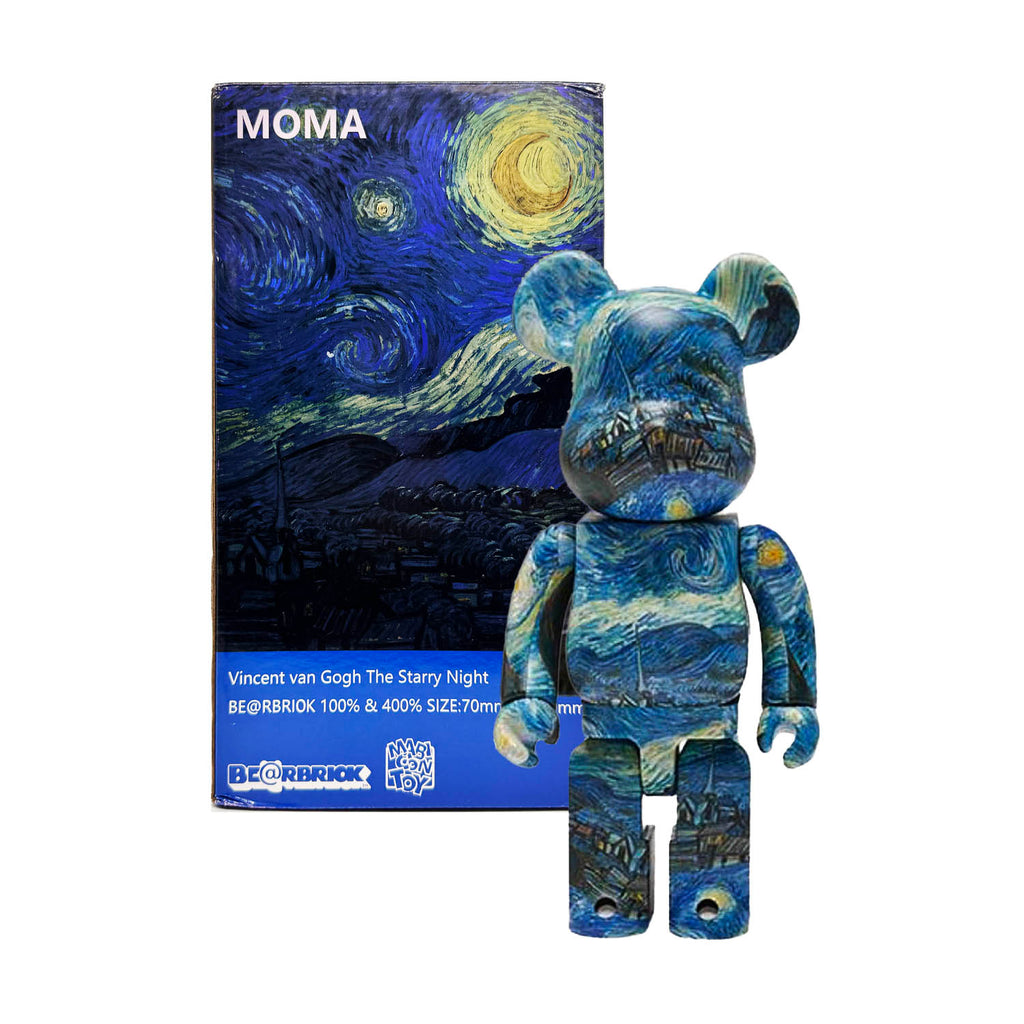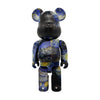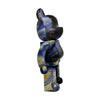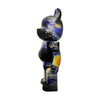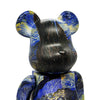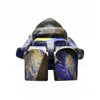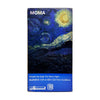'Starry Night' by Vincent Van Gogh, 2021
Limited Edition figure collab. celebrating Be@rbrick x Medicom Toy x MoMA Museum, NY.
Officially licensed by the Van Gogh Museum, Amsterdam.
Based on the artist's seminal, groundbreaking artwork from 1889.
400% figure (11 Inches/28 Centimeters tall)
11.5 x 6.3 x 4.3 Inches (box)
Collectible hydro-dipped vinyl figure (MOMA Special Edition 400% figure only).
Limited Edition (Sold Out).
New in original, custom-printed box.
ABOUT THE ART
The Starry Night, often called simply Starry Night, is an oil-on-canvas painting by the Dutch Post-Impressionist painter Vincent van Gogh. Painted in June 1889, it depicts the view from the east-facing window of his asylum room at Saint-Rémy-de-Provence, just before sunrise, with the addition of an imaginary village. It has been in the permanent collection of the Museum of Modern Art in New York City since 1941, acquired through the Lillie P. Bliss Bequest. Described as a "touchstone of modern art", 'The Starry Night' has been regarded as one of the most recognizable paintings in the Western canon.
The painting was created in mid-June 1889, inspired by the view from Van Gogh’s bedroom window at the Saint-Paul-de-Mausole asylum. The former monastery functioned as a mental asylum, where Van Gogh voluntarily admitted himself on 8 May 1889, following a mental breakdown and his infamous act of self-mutilation that occurred in late December 1888. Catering to wealthy patients, the facility was less than half full at the time of Van Gogh's admission, allowing the artist access to both a second-story bedroom and a ground-floor studio. During his year-long stay, he remained highly productive, creating Irises, a self-portrait, and 'The Starry Night'.
The painting's celestial elements include Venus, which was visible in the sky at the time, though the moon’s depiction is not astronomically accurate. The cypress trees in the foreground were exaggerated in scale compared to other works. Van Gogh's letters suggest he viewed them primarily in aesthetic rather than symbolic terms. The village in the painting is an imaginary addition, based on sketches rather than the actual landscape seen from the asylum.












